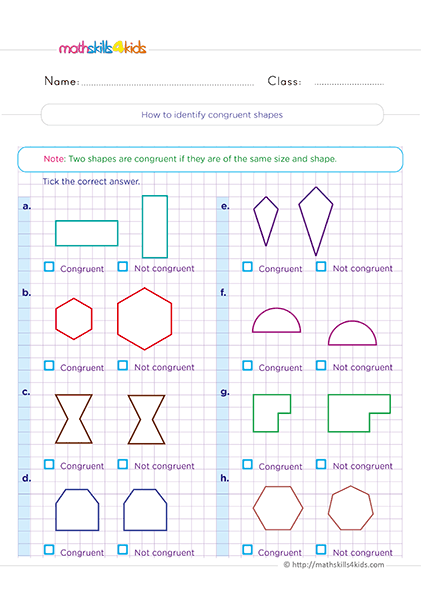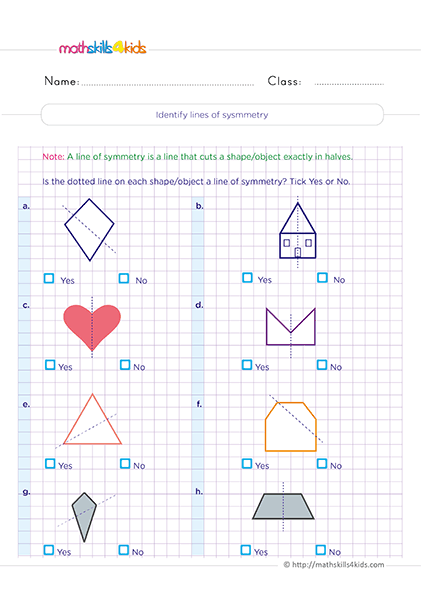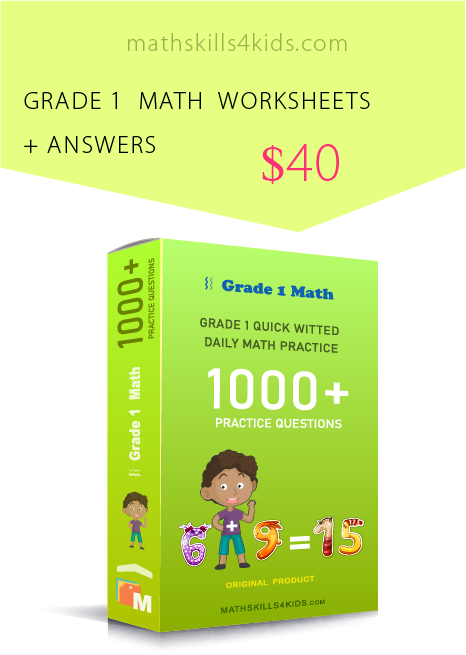Free printable 2nd Grade 2D shape worksheets for math practice
Are you seeking an opportunity to reinforce your 2nd grader's 2D shapes learning skills? If so, you're in luck. We have created some free printable 2nd Grade 2D shape worksheets to increase your 2nd grader's eagerness and love for more math practice.
-
These worksheets are perfect for math practice, homework, or even as a supplement to your curriculum.
In this article, we will show you why 2D shapes are important for 2nd-grade math skills, how to use these fun and free printable worksheets, different types of 2D shapes and their properties, fun activities and games to reinforce 2D shape learning, and tips and tricks to help your child master 2D shapes.
Let's get started!
Why 2D shapes are important for 2nd-grade math skills
Some of the reasons why 2D shapes are important for 2nd-grade math skills is because, first, they are the building blocks of geometry and spatial reasoning.
Secondly, learning about 2D shapes helps your child develop important math skills such as:
- Recognizing and naming common shapes such as circles, squares, triangles, rectangles, pentagons, hexagons, and octagons.
- Comparing and contrasting shapes based on their attributes, such as sides, angles, vertices, and faces.
- Classifying and sorting shapes into categories based on their properties, such as regular or irregular, symmetrical or asymmetrical, congruent or similar.
- Measuring and estimating the perimeter and area of shapes using standard or non-standard units.
- Drawing and constructing shapes using rulers, protractors, compasses, or paper folding tools.
- Identifying and creating patterns using shapes.
- Finding and describing the location and movement of shapes using positional words and directions.
As you can see, learning about 2D shapes is fun and essential for your child's math success!
-
BROWSE THE WEBSITE
-
DOWNLOAD FREE WORKSHEETS
-
-
2nd GRADE MATH TOPICS
- Counting and numbers
- Comparing and ordering
- Reading and writing numbers
- Shape patterns
- Adding of 1-digit numbers
- Subtracting of 1-digit numbers
- Additing 2-digit numbers
- Subtracting within 2-digits
- Up to 3-digit addition
- Subtracting within 3-digit
- Properties of addition & subtaction
- Mixed operations
- Place-value
- Estimating and rounding
- Logical reasoning
- Money Math
- Telling Time
- Data and graphing
- Units of measurement
- 2D shapes
- 3D shapes
- Geometric measurement
- Fractions
- Probability
- Multiplication
- Division
-
-
-
How to use these fun and free printable 2nd Grade 2D shapes worksheets: The best guide from Mathskills4kids.com
As your kids already know the importance of 2D shapes, it is time to start practicing. Now, please read through and see how to use our fun and free printable 2nd Grade 2D worksheets to review various 2D shape concepts with your kids.
Mathskills4kids.com has made things very easy for you. You only require minimal preparation, which is:
- Download and print the worksheets from the link below. You can print them in color or black and white.
- Choose the worksheets that match your child's skill level and learning goals. You can use them in any order or sequence that works best for you.
- Have your child complete the worksheets independently or with your guidance. You can also use them as a review or assessment tool.
- Check the answers using the answer key provided at the end of each worksheet. You can also discuss the answers with your child and provide feedback or encouragement.
-
Different types of 2D shapes and their properties found
There are many different types of 2D shapes and properties found in mathskills4kids.com, but in this article, we will focus on the most common ones your child will encounter in 2nd-grade math. These are:
- Circle: A circle is a closed curve with no sides or angles. All points on the circle are equidistant from the center.
The distance from the center to any point on the circle is called the radius. The distance around the circle is called the circumference.
- Square: A square is a quadrilateral (a four-sided shape) with four equal sides and four right angles (90 degrees).
The opposite sides of a square are parallel (they never meet). The diagonal of a square is a line segment that connects two opposite vertices (corners) of the square.
The diagonal of the square bisects (cuts in half) both the angle and the side it crosses.
- Triangle: A triangle is a polygon (a closed shape with straight sides) with three sides and three angles. The sum of the angles of a triangle is always 180 degrees.
There are different types of triangles based on their sides or angles, such as equilateral (all sides equal), isosceles (two sides equal), scalene (no sides equal), right (one angle is 90 degrees), acute (all angles less than 90 degrees), or obtuse (one angle more than 90 degrees).
- Rectangle: A rectangle is a quadrilateral with four sides and four right angles. The opposite sides of a rectangle are equal and parallel.
The diagonal of a rectangle is a line segment that connects two opposite vertices of the rectangle. The diagonal of a rectangle bisects both the angle and the side it crosses.
- Pentagon: A pentagon is a polygon with five sides and five angles. The sum of the angles of a pentagon is always 540 degrees.
There are different types of pentagons based on their sides or angles, such as regular (all sides and angles equal), irregular (not all sides or angles equal), convex (no angle more than 180 degrees), or concave (at least one angle more than 180 degrees).
- Hexagon: A hexagon is a polygon with six sides and six angles. The sum of the angles of a hexagon is always 720 degrees. Different types of hexagons are based on their sides or angles, such as regular, irregular, convex, or concave.
- Octagon: An octagon is a polygon with eight sides and eight angles. The sum of the angles of an octagon is always 1080 degrees. Different types of octagons are based on their sides or angles, such as regular, irregular, convex, or concave.
- Circle: A circle is a closed curve with no sides or angles. All points on the circle are equidistant from the center.
-
Fun activities and games to reinforce 2d shape learning
Besides using our worksheets, you can also try some of these fun activities and games to reinforce 2D shape learning with your child:
- Shape Hunt: Go on a shape hunt around your house or neighborhood and look for different 2D shapes in everyday objects. For example;
You can find circles in clocks, wheels, plates, coins, etc. You can also use a camera or a phone to take pictures of the shapes you find and make a collage or a slideshow.
- Shape Art: Use different 2D shapes to create art projects such as collages, mosaics, paintings, drawings, etc.
To make your shape art, you can use paper cutouts, stickers, stamps, crayons, markers, paints, etc. You can also use natural or recycled materials, such as leaves, rocks, shells, bottle caps, etc., to make your shape art. Be creative and have fun!
- Shape Puzzles: Cut out different 2D shapes from paper or cardboard and mix them up. Then challenge your child to assemble them to form larger shapes or pictures.
You can also use tangrams (a set of seven geometric shapes that can be arranged to form various figures) or pattern blocks (a set of colorful shapes that can be used to create patterns or designs) to make your shape puzzles.
- Shape Bingo: Make your shape bingo cards by drawing or pasting different 2D shapes on a grid. Then use a spinner, a dice, or a deck of cards to call out the shapes.
Please have your child mark the shapes on their bingo card with a marker, a chip, or a sticker. The first one to get five in a row (horizontally, vertically, or diagonally) wins!
- Shape Memory: Make your shape memory cards by drawing or pasting pairs of matching 2D shapes on index cards. Then shuffle the cards and lay them face down on a table.
Take turns with your child to flip over two cards at a time and try to find the matching pairs. If the cards match, keep them and take another turn. If they don't match, turn them back over and let the other player take a turn. The one with the most pairs at the end wins!
- Shape Hunt: Go on a shape hunt around your house or neighborhood and look for different 2D shapes in everyday objects. For example;
-
Tips and tricks to help your child master 2d shapes
Here are some tips and tricks to help your child master 2D shapes:
- Use real-life examples and connections to help your child relate 2D shapes to their surroundings and experiences.
- Use manipulatives and hands-on activities to help your child explore and discover 2D shapes and their properties.
- Use songs, rhymes, stories, and games to help your child remember and recall 2D shape names and facts.
- Use visual aids such as posters, charts, flashcards, and diagrams to help your child recognize and identify 2D shapes and their attributes.
- Use questions and prompts to help your child compare and contrast 2D shapes based on their similarities and differences.
- Use feedback and encouragement to help your child build confidence and motivation in learning 2D shapes.
Bonus: Find more resources to reinforce 2D shape learning in second grade here!
If you're looking for more ways to help your child practice and master 2D shapes, you're in luck! We've compiled a list of some of the best online and offline resources offering free printable 2nd Grade 2D shape worksheets for math practice and fun.
Online Resources:
- Khan Academy: This website has a great section on 2D shapes for second graders, with videos, quizzes, and exercises that cover everything from identifying and naming shapes to finding area and perimeter.
You can also track your child's progress and see their performance. Recognizing shapes (video) | Geometry | Khan Academy
- Math Playground: This website has a lot of interactive games and puzzles that involve 2D shapes. Your child can play with tangrams, pattern blocks, shape sorting, symmetry, fractions, and more.
They'll have so much fun that they won't even realize they're learning! Shape Games | Graphing Games | Math Playground
- ABCya: This website has a variety of games and activities that are suitable for second graders who are learning about 2D shapes.
Your child can create shapes, match shapes to their names, sort shapes by attributes, and more. They can also explore other math topics and skills on this website. Shape Match • ABCya!
Offline Resources:
- Books: Many books introduce and explain 2D shapes fun and engagingly.
Our favorites are The Greedy Triangle by Marilyn Burns, The Shape of Things by Dayle Ann Dodds, Shapes That Roll by Karen Nagel, and Round Is a Tortilla by Roseanne Thong.
- Manipulatives: You can use various objects and materials to help your child explore and learn about 2D shapes. Some examples are pattern blocks, geoboards, tangrams, shape cutters, stickers, stamps, etc.
You can also use everyday items like paper plates, straws, toothpicks, buttons, etc., to make your shapes.
- Art Projects: You can incorporate 2D shapes into various art projects that your child can enjoy. Some ideas are making shape collages, shape paintings, shape sculptures, shape mobiles, shape puppets, etc.
You can also use different mediums, like clay, paper mache, cardboard, etc., to create different effects.
- Games: You can play various games with your child that involve 2D shapes. Some examples are shape bingo, shape memory, shape scavenger hunts, shape charades, shape riddles, etc. You can also make up your games or modify existing ones to include 2D shapes.
Thank you for sharing the links of MathSkills4Kids.com with your loved ones. Your choice is greatly appreciated.
-
We hope you found this article helpful and informative.
Learning 2D shapes is an important skill for second graders that will help them develop their spatial awareness and geometric reasoning. Using the fun resources presented above and our free printable 2nd Grade 2D shape worksheet for math practice, you can make learning 2D shapes an amazing experience for your child.
Thank you for reading, and happy learning!





